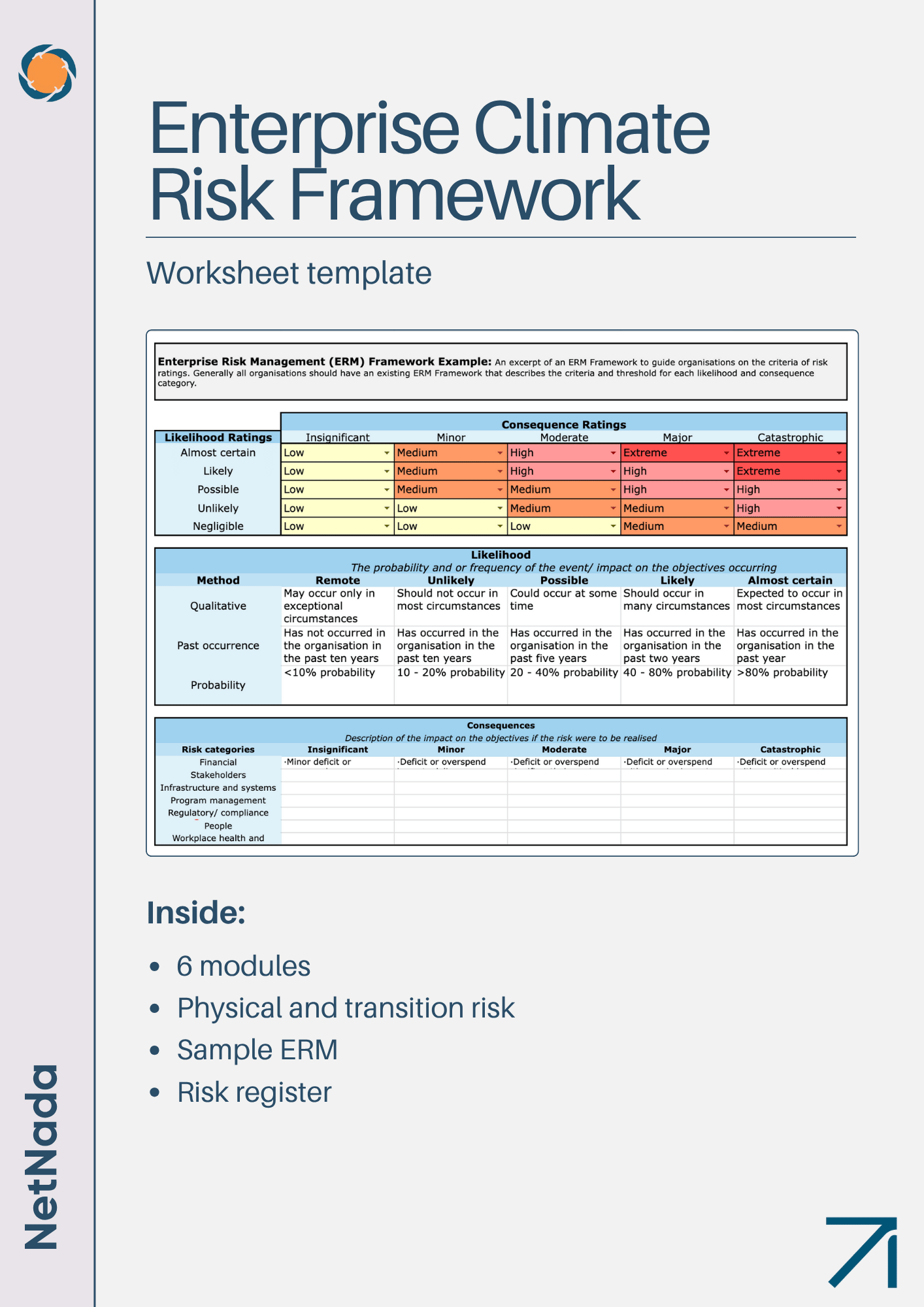
NetNada collaborates with universities, government bodies, and our network of clients and consultants to create relevant and timely resources for organisations reporting on climate and sustainability.
If you are a group 1-3 company in Australia this is for you. This templates allows you to get your started straight away as it has examples already.
Most importantly, by completing the steps in the spreadsheet you are already on track to build your strategy pillar.